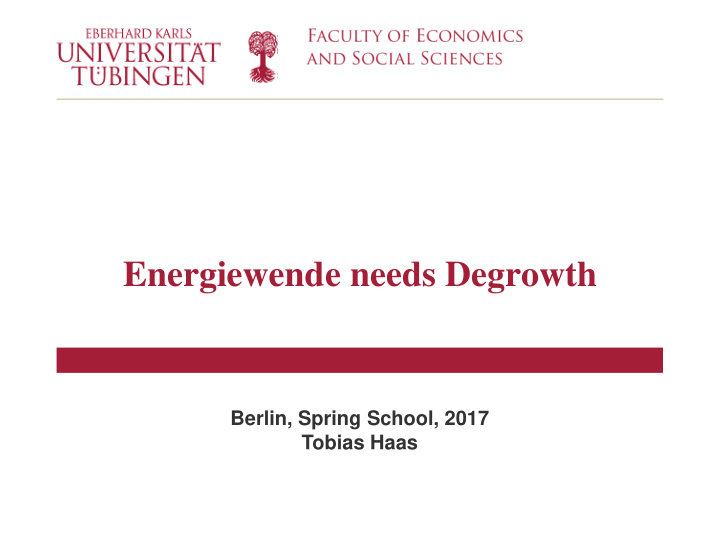



Energiewende needs Degrowth Berlin, Spring School, 2017 Tobias Haas
Structure of the presentation 1. Energiewende and imperial mode of living 2. Historical development 3. Successes and Shortcomings 4. Conclusions 1
Energiewende and imperial mode of living Imperial mode of living (Brand/Wissen) • mode of living (Gramsci) • fordist mode of production and living • social structures, production and consumption, everyday live • imperial because of elements of coercion (acess to natural ressourcen exploitation of labor) 2
Energiewende and imperial mode of living Energiewende tends to modernize and stabilize the imperial mode of living 3
Historical development • social and ecological movements of the 1970s • politication of environmental and energy related issues • strong anti-nuclear movements, search for alternatives • 1980: „Energiewende: growth and prosperity without petroleum and uranium“ 4
Historical development • development of renewables • institutionalization of the green movement • 1991 StrEG • 2000 EEG 5
Successes of the Energiewende • sharp increase of renewable’s share • oligopoly was weakened • broad participation and support • new actors: cooperatives, citizens, farmers, etc. • decentralization and democratization • reduction of carbon emissions 6
Shortcomings of the Energiewende • efficiency without degrowth • the roots of the imperial mode of living is not touched • Energiewende as opportunity for investment • passive revolution (Gramsci) • market integration of renewable energy • tenders and corridors • slowing down the speed – pushing it in an other direction 7
Energiewende needs degrowth • further democratization (fight against energy poverty, public ownership) • selective growth – labour relations • heating and mobility • coal phase out – just transition • socio-ecological transformation = transformation of German model of capitalism 8
Thank you for your attention!!! 9
Recommend
More recommend